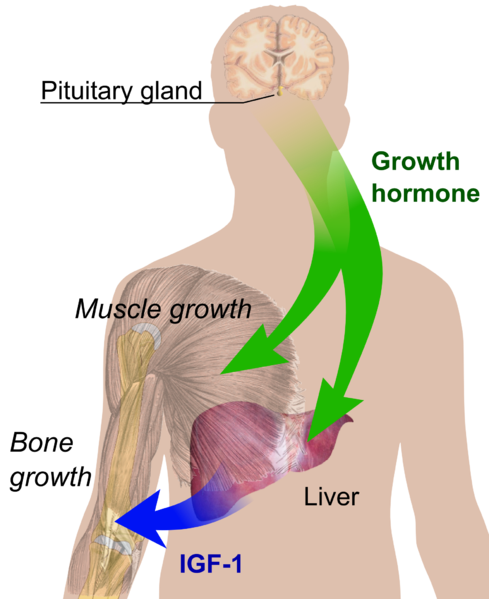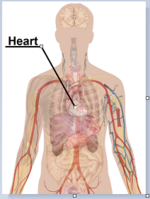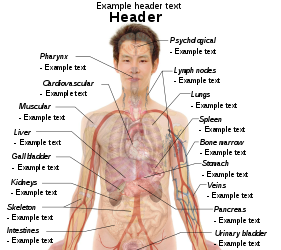File:Endocrine growth regulation.png

Original file (1,698 × 2,080 pixels, file size: 1.05 MB, MIME type: image/png)
Captions
Captions
Contents
Summary
[edit]| DescriptionEndocrine growth regulation.png |
English: Main pathway in growth regulation by the endocrine system, mediated by growth hormone and insulin-like growth factor 1 (IGF-1). (See Wikipedia:Growth hormone#Functions of GH).
To discuss image, please see Template talk:Human body diagrams |
| Date | |
| Source | All used images are in public domain. |
| Author | Mikael Häggström |

|
File:Endocrine growth regulation.svg is a vector version of this file. It should be used in place of this PNG file when not inferior.
File:Endocrine growth regulation.png → File:Endocrine growth regulation.svg
For more information, see Help:SVG.
|
Licensing
[edit]| Public domainPublic domainfalsefalse |
| I, the copyright holder of this work, release this work into the public domain. This applies worldwide. In some countries this may not be legally possible; if so: I grant anyone the right to use this work for any purpose, without any conditions, unless such conditions are required by law. |
Human body diagrams[edit]Main article at: Human body diagrams Template location:Template:Human body diagrams How to derive an image[edit]Derive directly from raster image with organs[edit]The raster (.png format) images below have most commonly used organs already included, and text and lines can be added in almost any graphics editor. This is the easiest method, but does not leave any room for customizing what organs are shown. Adding text and lines: Derive "from scratch"[edit]By this method, body diagrams can be derived by pasting organs into one of the "plain" body images shown below. This method requires a graphics editor that can handle transparent images, in order to avoid white squares around the organs when pasting onto the body image. Pictures of organs are found on the project's main page. These were originally adapted to fit the male shadow/silhouette.
Organs:
Derive by vector template[edit]The Vector templates below can be used to derive images with, for example, Inkscape. This is the method with the greatest potential. See Human body diagrams/Inkscape tutorial for a basic description in how to do this.
Examples of derived works[edit]
Licensing[edit]
|
File history
Click on a date/time to view the file as it appeared at that time.
| Date/Time | Thumbnail | Dimensions | User | Comment | |
|---|---|---|---|---|---|
| current | 10:55, 19 February 2012 |  | 1,698 × 2,080 (1.05 MB) | Mikael Häggström (talk | contribs) | Updated |
| 17:29, 4 May 2009 |  | 465 × 558 (309 KB) | Mikael Häggström (talk | contribs) | {{Information |Description={{en|1=g}} |Source=Own work by uploader |Author=Mikael Häggström |Date=g |Permission= |other_versions= }} <!--{{ImageUpload|full}}--> |
You cannot overwrite this file.
File usage on Commons
The following page uses this file:
File usage on other wikis
The following other wikis use this file:
- Usage on hu.wikipedia.org
Metadata
This file contains additional information such as Exif metadata which may have been added by the digital camera, scanner, or software program used to create or digitize it. If the file has been modified from its original state, some details such as the timestamp may not fully reflect those of the original file. The timestamp is only as accurate as the clock in the camera, and it may be completely wrong.
| Horizontal resolution | 78.75 dpc |
|---|---|
| Vertical resolution | 78.75 dpc |
| Software used |






























